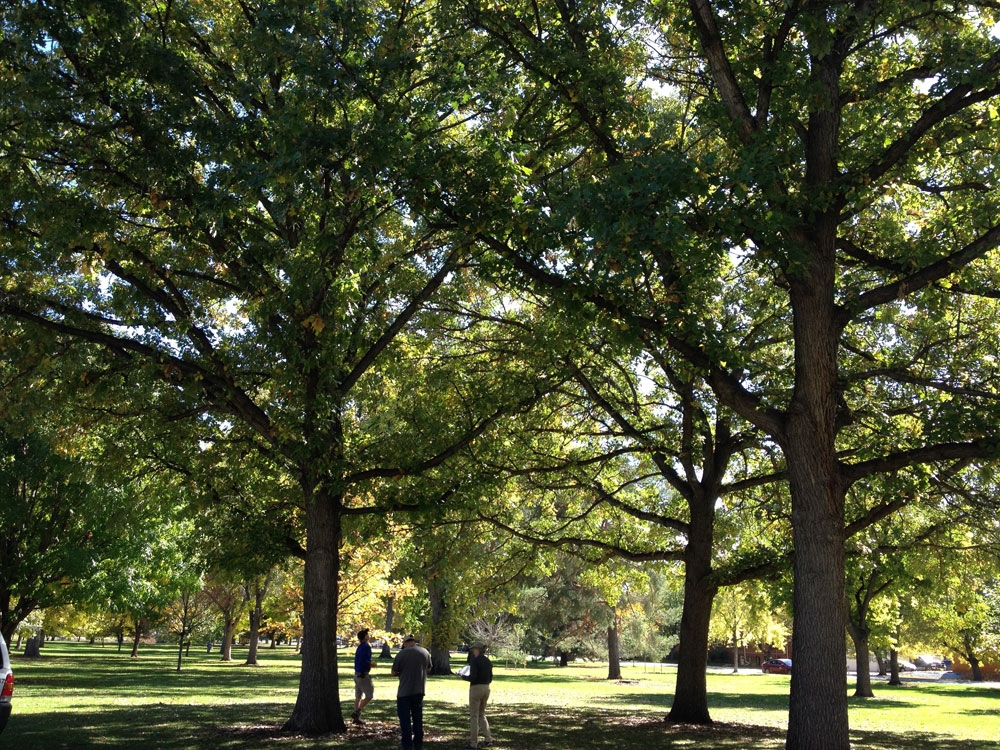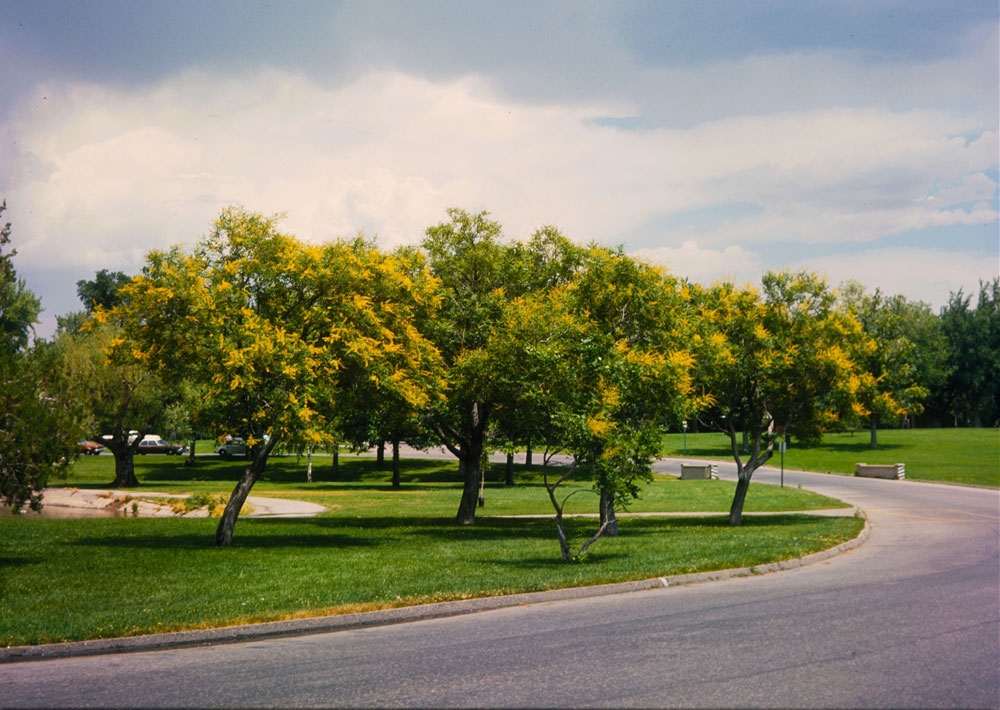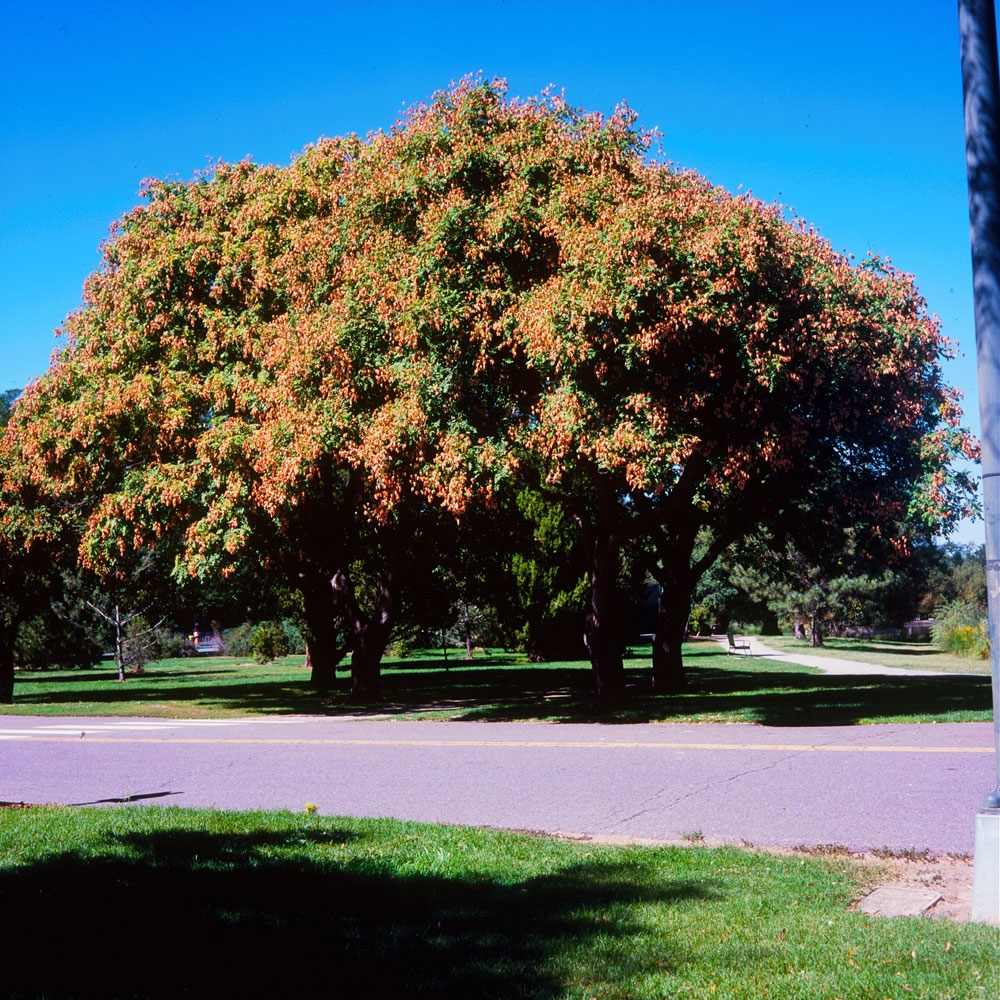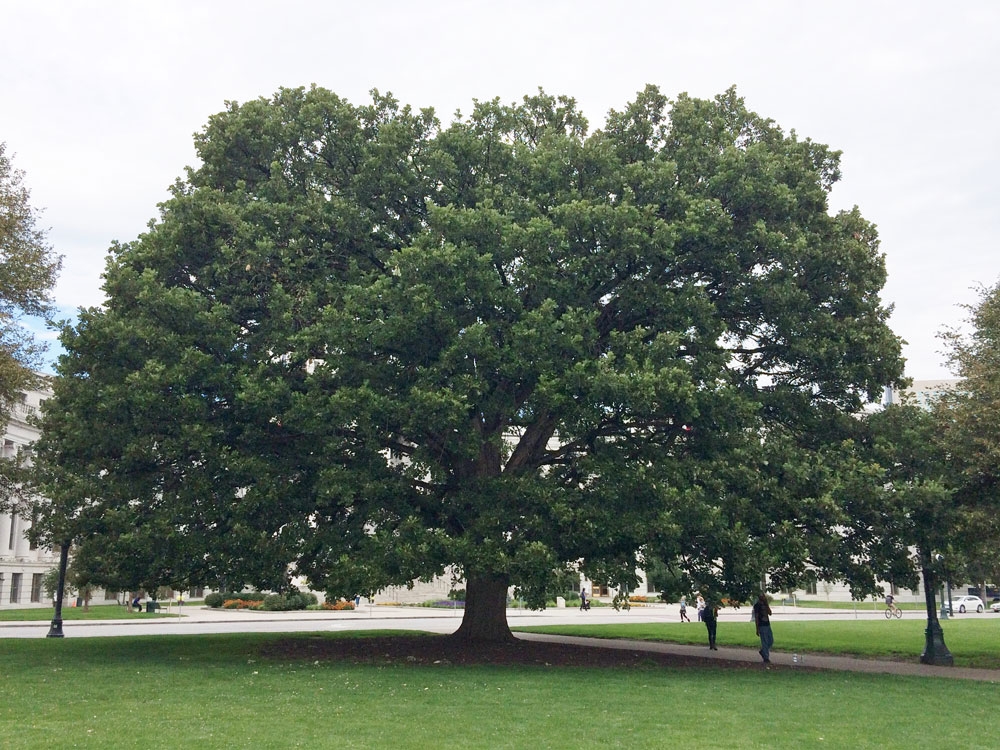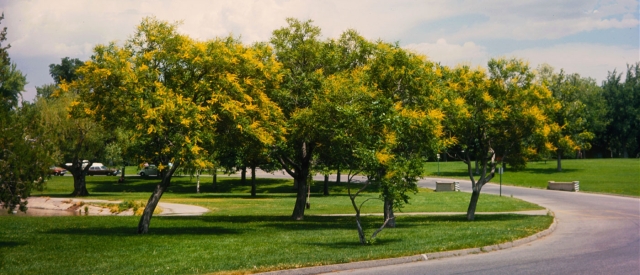
The Rollinger Tree Collection 50-Year Survey Project is a collaboration between Denver Botanic Gardens, Denver’s Office of the City Forester, Colorado State University (CSU) Extension, Colorado State Forest Service, the Colorado Tree Coalition and other local participants to revisit a survey of major trees done in 1968 by Alan Rollinger in order to gain insight into the history, health and future of Denver’s urban trees.
Background
In 1968, Al Rollinger was a young landscape designer, recently graduated from CSU. Curious about the kinds of trees growing in Denver, he decided to do a survey of the more unusual trees, ones other than the very commonly planted species like American elm, silver maple, honeylocust and green ash. Therefore, he undertook the huge effort of doing a street-by-street survey, noting the species, location, diameter and height of over 1,100 trees of 46 species. In 1969, Rollinger documented the results of his survey in a written report.
The Project
Now, over 50 years later, we realize how valuable the data collected in this survey is to analyze the health, mortality and growth patterns of various species in the Denver area. Therefore, in 2016 we began the process of finding, measuring and taking photographs of the trees surveyed in 1968 to see which are still alive and to determine growth patterns. By late 2018 we finished the data collection and documented the results in a report released in 2019. This study provides a wealth of information that can be used to assess which tree species are best suited to Denver’s climate and can act as a guide to future tree planting.
Project Results
Of the 1,148 trees in the original survey, 691, or 60 percent, were found to be still alive. The survival rates by species ranged from under 30 percent to over 80 percent, with bur oak (Quercus macrocarpa) and Kentucky coffee tree (Gymnocladus dioicus) having the highest survival rates. However, the survey sessions that took place provided many unexpected benefits above and beyond how many trees have survived or how much they have grown:
- We learned an enormous amount about trees and those who care for them.
- We realize more than ever how much everyone values our urban tree canopy.
- Since many of the trees are on private property, it’s given us a chance to talk to homeowners about these special trees and sometimes learn their interesting stories and histories.
- Since some of the trees date back to the early days of the City’s history, investigating their stories has revealed how the history of Denver is intertwined with and revealed by its notable trees.
- Staff from Denver Botanic Gardens, Denver City Forestry, Colorado State Forestry, local arborists and master gardeners enjoyed the relationship-building collaboration.
- More than anything, this project revealed that our valuable old trees are very much at risk as the city grows and changes; we’ve seen how many trees have disappeared in areas with the greatest change and redevelopment since 1968.
Project Report
The report summarizes the findings of the project and the implications for our urban forest. The results of the data collection, including which trees survived and the past and current measurements, are listed in Appendix B of the report.
The project report is now available and can be downloaded as a PDF.
If you were notified that one of these trees is located on your property and you would like to see the past and current measurements, send an email to KelaidiP@botanicgardens.org with your address and we will tell you the ID number of your tree to look up in the data table included at the end of the report.
Gallery
